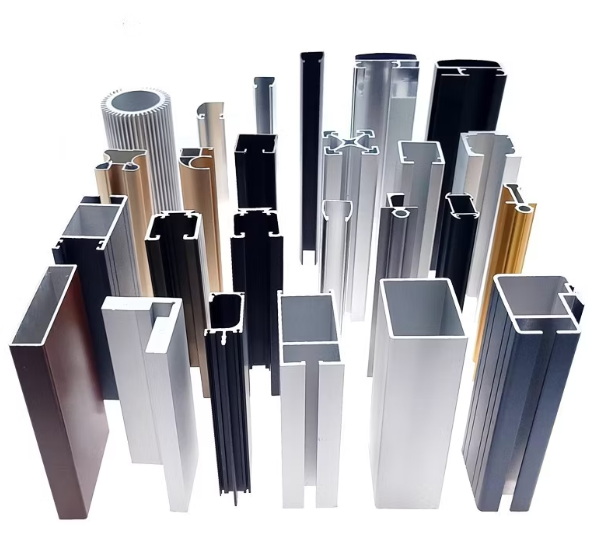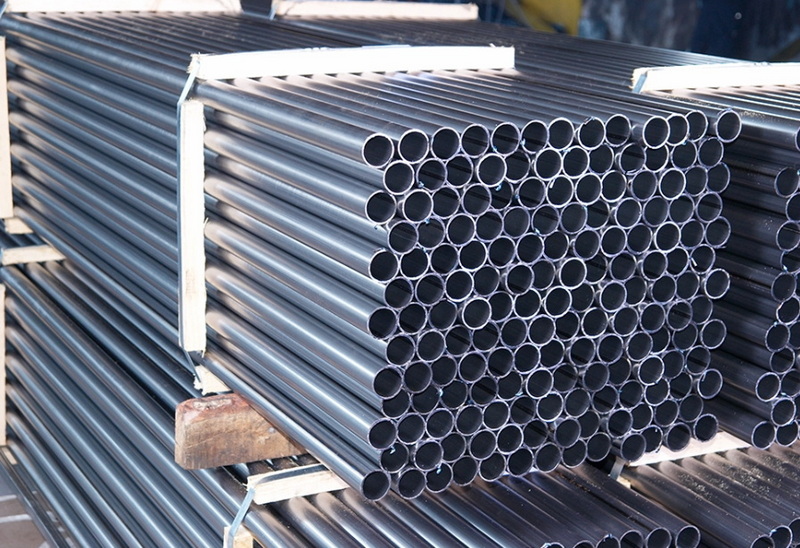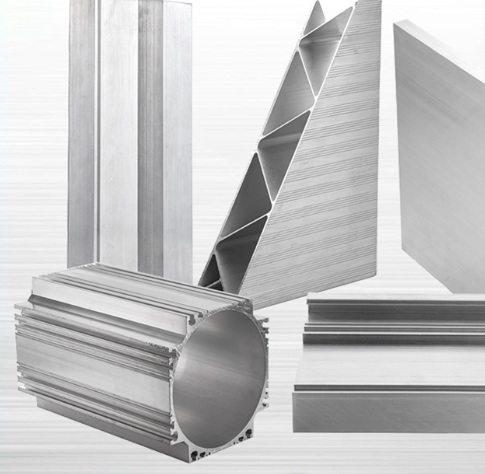Content Menu
● 1. Sustainability in Aluminum Extrusion Design
● 2. Technological Innovations
● 3. Advanced Die Design
● 4. Material Enhancements
● 5. Customization and Bespoke Solutions
● 6. Architectural Innovations
● 7. Enhanced Quality Control Measures
● Conclusion
● FAQ
>> 1. What is aluminum extrusion?
>> 2. How does sustainability impact aluminum extrusion design?
>> 3. What role does AI play in aluminum extrusion?
>> 4. What are the benefits of using advanced die designs?
>> 5. How can I ensure my aluminum profile design is cost-effective?
Aluminum extrusion has become a cornerstone of modern manufacturing, playing a pivotal role in various industries such as automotive, construction, and electronics. As the demand for innovative and sustainable solutions grows, the trends in aluminum extrusion design are evolving rapidly. This article explores the latest trends shaping the aluminum extrusion industry, focusing on advancements in technology, sustainability practices, and design methodologies.

1. Sustainability in Aluminum Extrusion Design
The shift towards sustainable manufacturing practices is one of the most significant trends influencing aluminum extrusion design today. Manufacturers are increasingly adopting methods that reduce environmental impact while maintaining product quality.
- Energy Efficiency: Innovations such as induction heating are being explored to heat aluminum billets more quickly and uniformly, significantly reducing energy consumption during the extrusion process.
- Waste Reduction: New die designs and extrusion technologies are minimizing material waste. Efficient scrap handling and recycling systems ensure that any waste generated is repurposed effectively.
- Carbon Footprint Reduction: The industry is actively seeking ways to lower carbon emissions throughout the aluminum production cycle—from mining bauxite to recycling aluminum scrap. This commitment to sustainability is crucial as companies strive to meet environmental standards and consumer expectations.
- Environmentally Conscious Practices: The adoption of eco-friendly practices is becoming standard in the industry. This includes using renewable energy sources for production and implementing closed-loop recycling systems that minimize waste and maximize resource efficiency.
2. Technological Innovations
Technological advancements are at the forefront of transforming aluminum extrusion processes. These innovations enhance precision, efficiency, and versatility in design.
- Automation and Robotics: The integration of automated systems in extrusion plants increases production efficiency by handling repetitive tasks such as billet loading and quality inspection. This reduces human error and improves overall product quality.
- Artificial Intelligence (AI): AI is revolutionizing the aluminum extrusion industry by optimizing processes like predictive maintenance and die design. AI algorithms analyze real-time data from machinery, enabling immediate adjustments to ensure that each profile meets exact specifications.
- Smart Manufacturing: The concept of smart manufacturing is gaining traction in the aluminum extrusion industry. This involves using IoT (Internet of Things) devices and data analytics to monitor and optimize production processes. By collecting real-time data, manufacturers can identify inefficiencies and make informed decisions to improve productivity.
- 3D Printing Integration: The fusion of aluminum extrusion with 3D printing technology allows for rapid prototyping of intricate designs. This synergy enables manufacturers to produce complex geometries that traditional methods cannot achieve.
- Advanced Die Design: New die technologies allow for more complex and precise aluminum profiles. Computer-aided design (CAD) software enables designers to create intricate die shapes that enhance cooling and lubrication systems, improving die lifespan and performance.
3. Advanced Die Design
The design of dies used in the extrusion process is critical for producing high-quality profiles. Recent advancements have made it possible to create more complex and precise shapes.
- Computer-Aided Design (CAD): CAD software enables designers to create intricate die shapes that enhance cooling and lubrication systems, improving die lifespan and performance.
- Precision Extrusion Techniques: These techniques allow for more detailed designs while maintaining high tolerances. Manufacturers can now produce profiles with varying wall thicknesses without compromising structural integrity.
- Rapid Quench Systems: New rapid quench systems utilize multiple nozzles and adjustable flow valves to cool extrusions uniformly as they exit the press. These systems ensure more consistent tempering along the length of the extrusion, reducing straightness and twist deformations, thus improving overall product quality.
4. Material Enhancements
As the capabilities of aluminum extrusion expand, new alloys and material enhancements are emerging to meet diverse application needs.
- High-Strength Alloys: The development of higher strength 6000 series aluminum alloys caters specifically to automotive applications where strength and durability are paramount.
- Nano-Coating Technologies: Recent advancements in nano-coating technologies have significantly improved the durability of extruded profiles. These coatings provide an extra layer of protection against corrosion and abrasion, extending product lifespan across various applications.
- Hybrid Extrusion Techniques: Combining traditional methods with advanced processes has emerged to address the demand for aluminum profiles with enhanced strength and formability. These innovative methods fine-tune material characteristics, unlocking fresh avenues for utilization in aerospace, automotive, and other sectors where robustness is critical.
5. Customization and Bespoke Solutions
The demand for customized solutions is rising, driven by diverse consumer needs across industries.
- Bespoke Designs: Manufacturers are now capable of producing highly customized aluminum profiles tailored to specific project requirements. This flexibility allows architects and engineers to realize their visions without being constrained by traditional manufacturing limitations.
- Smart Extrusion Lines: The advent of smart extrusion lines integrated with IoT technology allows for comprehensive monitoring and control of production processes. This connectivity enhances efficiency, reduces downtime, and supports predictive maintenance.

6. Architectural Innovations
Aluminum extrusions are increasingly being utilized in architectural applications due to their lightweight yet strong characteristics.
- Sustainable Construction Practices: Aluminum's recyclability makes it a preferred choice for eco-friendly buildings that aim to meet stringent environmental standards while providing aesthetic appeal.
- Energy Efficiency in Design: Architects leverage aluminum extrusions for energy-efficient designs that contribute to reduced energy consumption in buildings through better insulation properties and structural integrity.
7. Enhanced Quality Control Measures
Quality control remains a critical aspect of aluminum extrusion manufacturing. Recent innovations have significantly improved inspection processes:
- Rapid Extrusion Profile Inspection: Advances in rapid extrusion profile inspection using Computerized Topology (CAT) X-ray scanning eliminate time-consuming sample preparation by allowing inspections directly at the extrusion press, enhancing efficiency and accuracy in quality control.
- AI-Powered Precision Control Solutions: Integrating AI into quality control processes enables real-time adjustments based on data analysis from machinery, ensuring each profile adheres strictly to specifications while improving resource efficiency.
Conclusion
The landscape of aluminum extrusion design is undergoing a significant transformation driven by sustainability, technological advancements, material enhancements, customization needs, architectural innovations, and enhanced quality control measures. As industries continue to evolve, aluminum extrusions will play a crucial role in meeting modern manufacturing demands while adhering to environmental standards. By embracing these trends, manufacturers can enhance their competitive edge while contributing positively to global sustainability efforts.

FAQ
1. What is aluminum extrusion?
Aluminum extrusion is a manufacturing process where aluminum billets are heated and forced through a shaped die to create long profiles with specific cross-sectional shapes used in various applications.
2. How does sustainability impact aluminum extrusion design?
Sustainability impacts aluminum extrusion design by encouraging manufacturers to adopt energy-efficient processes, reduce waste, lower carbon emissions throughout production cycles, and implement eco-friendly practices like recycling scrap materials.
3. What role does AI play in aluminum extrusion?
AI plays a crucial role in optimizing the extrusion process by analyzing real-time data from machinery for predictive maintenance, improving product quality through precision control solutions, enhancing operational efficiency across various stages of production.
4. What are the benefits of using advanced die designs?
Advanced die designs allow for more complex shapes with improved cooling systems that enhance die lifespan while ensuring high-quality profiles with precise tolerances during production processes—ultimately leading to better product performance.
5. How can I ensure my aluminum profile design is cost-effective?
To ensure cost-effectiveness in your aluminum profile design, aim for a smaller circumscribing circle diameter (CCD), maintain balanced wall thicknesses across designs, minimize hollows where possible during production planning, utilize efficient scrap handling practices throughout fabrication stages.






















